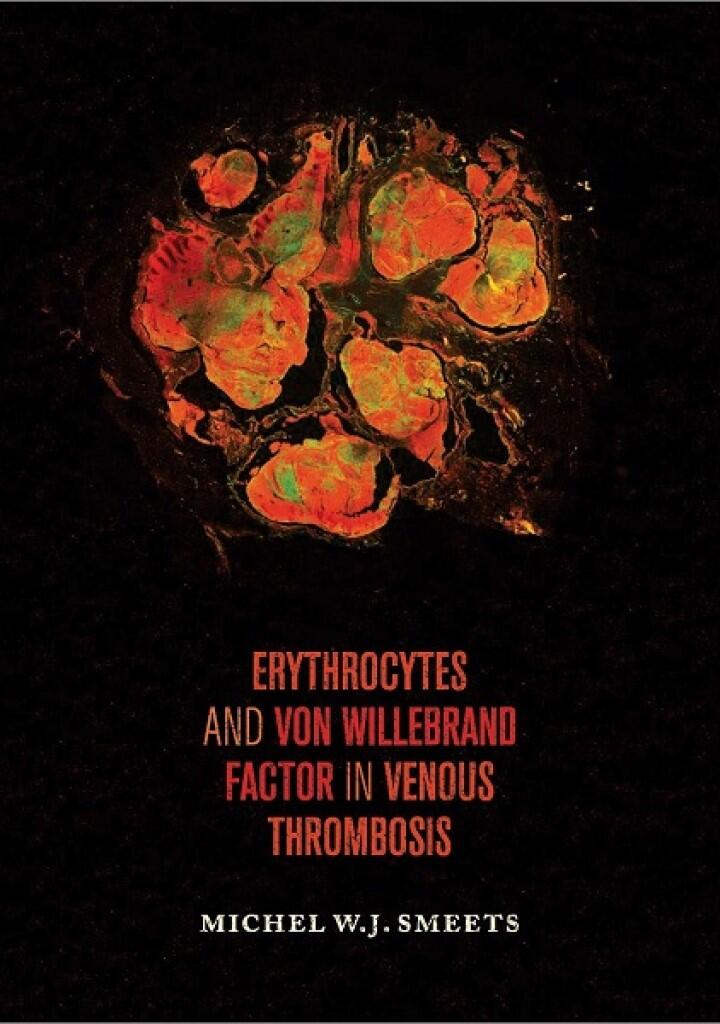Thesis Michel Smeets
On 17 May 2018 Michel Smeets defended his thesis 'Erythrocytes and von Willebrand factor in venous thrombosis' at the University of Amsterdam.
Promotor: Prof Peter Hordijk, PhD
Co-promotor: Stephan Huveneers PhD
Venue: Agnietenkapel, Universiteit van Amsterdam
Summary

Venous thromboembolism represents the third leading vascular disease after myocardial infarction and stroke. Erythrocytes, the most abundant cells in venous thrombi, are thought to be innocent bystanders that become tangled up in the fibrin mesh of venous thrombi. This thesis provides evidence that erythrocytes can bind to von Willebrand factor. The interaction between erythrocytes and von Willebrand factor increases significantly when the wall shear stress approaches stasis. Moreover, detailed microscopy imaging demonstrates that erythrocytes, von Willebrand factor, and fibrin show a striking pattern in human venous thrombi by forming erythrocyte-von Willebrand factor-erythrocyte and erythrocyte-von Willebrand factor-fibrin complexes. The interaction between erythrocytes, von Willebrand factor, and fibrin may contribute to the stabilization and propagation of a venous thrombus and could be a novel target for clinical intervention.
Chapters
Chapter 1
General Introduction
Chapter 2
Platelet-independent Adhesion of Calcium-loaded Erythrocytes to von Willebrand Factor, abstract, correction
Chapter 3
Stasis Promotes Erythrocyte Adhesion to von Wille brand Factor, abstract
Chapter 4
Circulating Erythrocytes Are Negative for von Wille brand Factor
Chapter 5
Does the ABO Blood Group Link Erythrocytes to von Willebrand Factor?
Chapter 6
Summary and General Discussion
Appendix I
F-Actin-anchored Focal Adhesions Distinguish Endothelial Phenotypes of Human Arteries and Veins, abstract
Appendix II
Anticoagulants in Blood Samples Affect Endothelial Barrier Function
Appendix Ill
Nederlandse Samenvatting